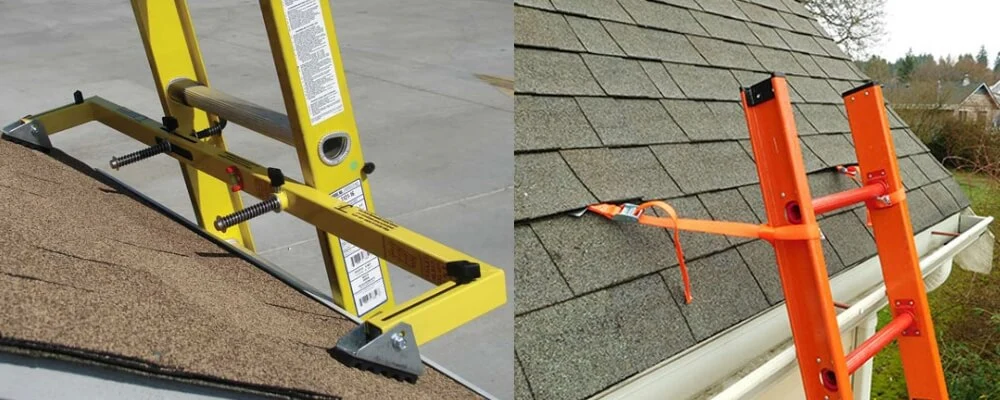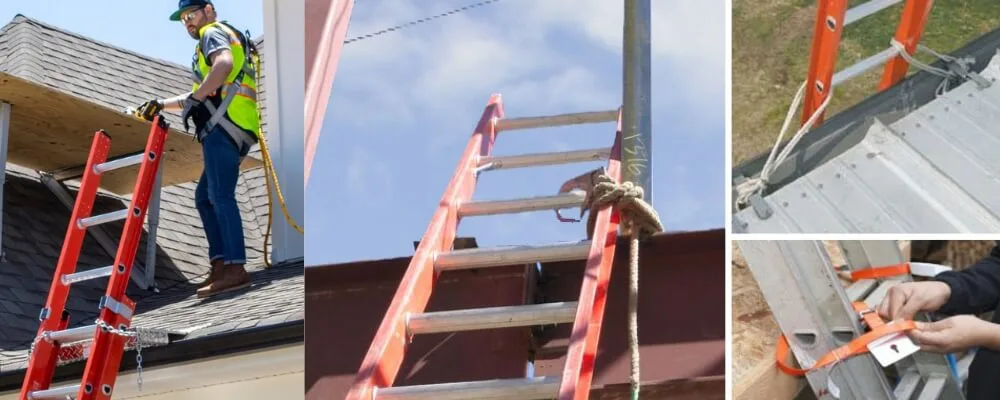Yes, ladders need to be tied off for safety. Tying off ladders can prevent accidents and falls.
This simple step secures the ladder, making it more stable. Using ladders is common in both DIY projects and professional work. While they seem straightforward, ladders can be dangerous if not used correctly. Tying off a ladder ensures it stays in place, reducing the risk of slipping or tipping over.
This practice is crucial for anyone looking to stay safe while working at heights. In this blog, we will explore why tying off ladders is essential. We will also discuss methods to do it effectively. Let’s dive into the importance of this safety measure and how it can protect you.
Importance Of Ladder Safety
Ensuring ladder safety is crucial for preventing accidents and injuries. Ladders are common tools in many households and workplaces. Yet, improper use can lead to serious consequences. Understanding the importance of ladder safety can save lives and reduce injuries.
Common Risks
Using ladders without proper precautions can be dangerous. One common risk is ladder slipping. This happens when the ladder base loses grip. Another risk is overreaching. This occurs when a person stretches too far from the ladder. Both risks can cause falls and injuries. Damaged or faulty ladders also pose a significant threat. Broken rungs or loose screws can lead to sudden failures.
Statistical Insights
Statistics highlight the gravity of ladder-related accidents. The Occupational Safety and Health Administration (OSHA) reports numerous ladder injuries annually. Falls from ladders account for many workplace fatalities. In the United States alone, ladder falls cause over 300 deaths each year. Injuries from ladder falls also lead to thousands of hospital visits. These numbers stress the need for proper ladder safety measures.
When To Tie Off Ladders
Knowing when to tie off ladders ensures safety on job sites. It prevents falls and accidents. Workers should understand specific situations and exceptions for tie-offs.
Situations Requiring Tie-off
Ladders must be tied off in several cases. These are crucial for worker safety.
- High Wind Conditions: Strong winds can make ladders unstable. Always tie off ladders during windy weather.
- Slippery Surfaces: Wet or oily surfaces are dangerous. Tie off the ladder to prevent slipping.
- Heavy Equipment Use: When using heavy tools, balance is key. Tie off ladders to maintain stability.
- Height: For heights over 24 feet, tie-offs are mandatory. This ensures the ladder does not move.
Exceptions
There are exceptions to the tie-off rule. Understanding these situations is important.
- Short Duration Tasks: If the task takes less than 15 minutes, a tie-off may not be needed.
- Low Heights: For ladders under 6 feet, tie-offs are less critical.
- Stable Ground: On solid, level surfaces, tie-offs might be optional.
In summary, always assess the work environment. Prioritize safety by knowing when to tie off ladders.
Methods For Securing Ladders
Ladders are essential tools for many tasks. Ensuring they are secure is crucial for safety. There are various methods to stabilize ladders. These methods help prevent accidents and injuries.
Tie-off Techniques
Tie-off techniques are effective for securing ladders. One common method is using rope or straps. Secure the top of the ladder to a stable structure. This prevents the ladder from slipping or falling. Ensure the rope or straps are strong and tied tightly. Another technique is using ladder tie-off hooks. These hooks attach to the ladder and anchor it to a fixed point. This provides additional stability and safety.
Alternative Stabilization
Alternative stabilization methods can also enhance ladder safety. Using ladder stabilizers is one approach. Stabilizers attach to the ladder and extend its base. This increases the ladder’s contact with the ground, reducing the risk of tipping. Another method is using ladder levelers. Levelers adjust the ladder’s legs to ensure it stands evenly on uneven surfaces. This helps maintain balance and prevents accidental slips.
Placing the ladder on a stable surface is crucial. Avoid soft or uneven ground that can cause instability. Using ladder mats or pads can also provide extra grip. This reduces the chance of the ladder sliding. Ensure the ladder’s feet are clean and in good condition. This helps maintain a firm grip on the surface.

Credit: www.hseblog.com
Choosing The Right Equipment
Choosing the right equipment is crucial for ladder safety. Ensuring you have the best ladder and accessories can prevent accidents. Let’s explore the types of ladders and safety accessories available.
Types Of Ladders
Different ladders serve different purposes. Here are some common types:
- Step Ladders: Ideal for indoor tasks and provide stability.
- Extension Ladders: Great for reaching high places. Extendable for flexibility.
- Telescoping Ladders: Compact and easy to transport. Suitable for multiple uses.
Safety Accessories
Safety accessories enhance ladder stability. They also protect the user from falls. Consider these:
- Ladder Stabilizers: Attach to the ladder for extra support.
- Ladder Feet: Non-slip feet prevent the ladder from sliding.
- Safety Harness: Provides additional security when working at height.
Having the right equipment is essential. It ensures both safety and efficiency while using ladders.
Training And Best Practices
Ensuring safety while using ladders is crucial. Proper training and adherence to best practices can prevent accidents. Let’s delve into some essential training and best practices for ladder usage.
Proper Usage
Using a ladder correctly is the first step in ensuring safety. Always place the ladder on a stable, level surface. Avoid using a ladder on slippery or uneven ground. Keep your body centered on the ladder to maintain balance. Never overreach; move the ladder if needed. Follow the manufacturer’s guidelines for weight limits and usage.
Inspection And Maintenance
Regular inspection and maintenance of ladders are vital. Check for any damage or wear before each use. Look for cracks, loose rungs, or broken parts. Ensure all moving parts work smoothly. Clean the ladder to remove any dirt or debris. Store ladders in a dry place to avoid rust and deterioration. Replace any damaged ladders immediately to avoid accidents.

Credit: www.safetyandhealthmagazine.com

Credit: www.hseblog.com
Frequently Asked Questions
Do I Need To Tie Off A Ladder?
Yes, tying off a ladder prevents it from slipping or falling. It ensures safety.
How Do You Tie Off A Ladder?
Use ropes or straps to secure the ladder to a stable structure. This keeps it in place.
What Happens If You Don’t Tie Off A Ladder?
Not tying off a ladder increases the risk of accidents. It can slip, causing injuries.
Are There Alternatives To Tying Off A Ladder?
Yes, use ladder stabilizers or safety devices. These can provide extra support and stability.
Conclusion
Tying off ladders can prevent accidents. Safety should always come first. Using a tied ladder ensures stability. It reduces risks of falls and injuries. Workers must follow safety guidelines. Proper ladder use saves lives. Always inspect ladders before use. Secure them properly.
Safety is everyone’s responsibility. Make it a habit to tie off ladders. Stay safe, stay secure. Your life depends on it.

